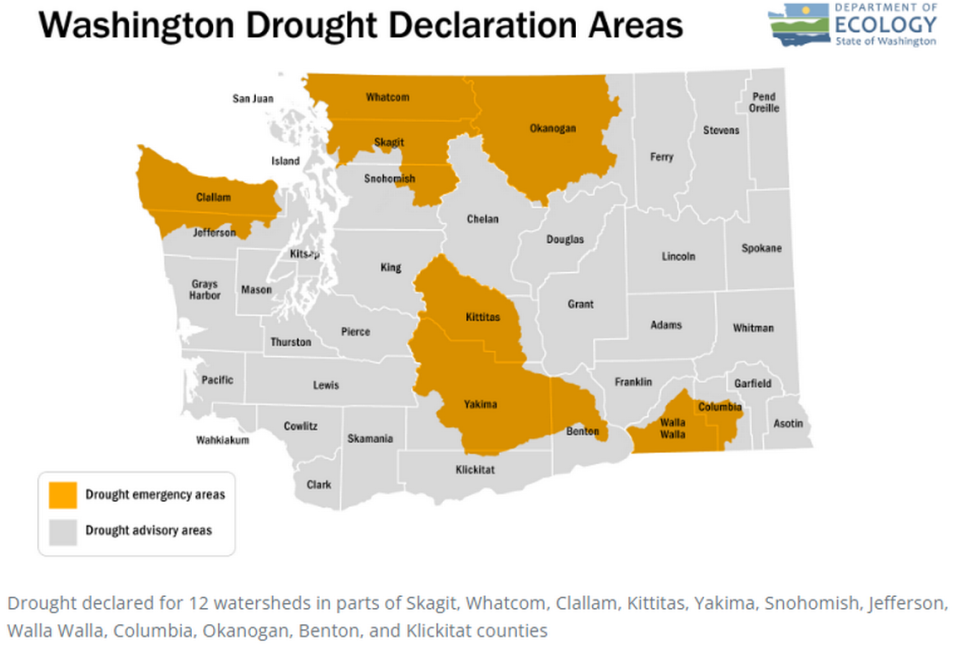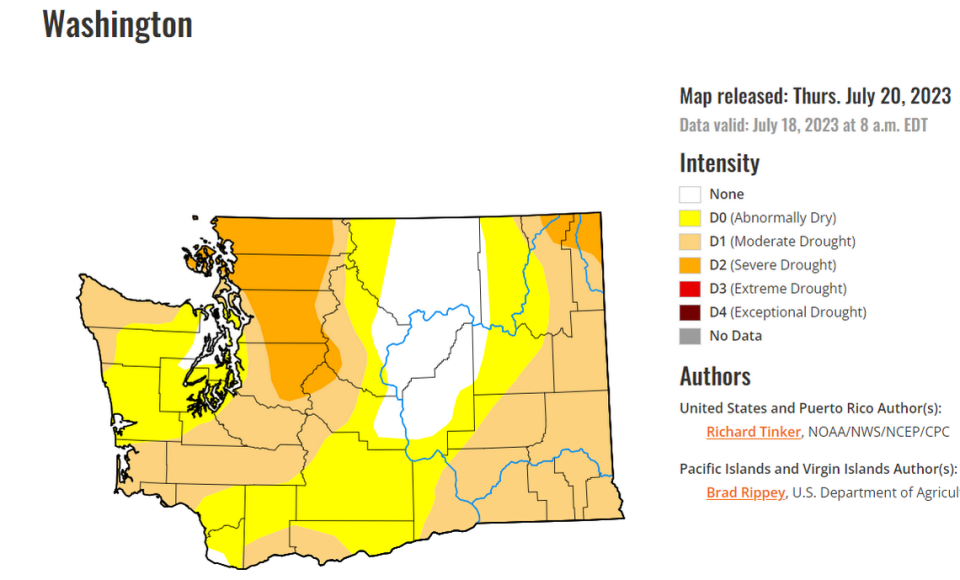Drought emergency declared in 12 WA counties. Watering restrictions for some
The Washington state Department of Ecology has declared a drought emergency for part of Benton County as the water supply in the lower Yakima River watershed has dropped.
All or parts of 12 counties of Washington state are in new drought emergency areas, the agency said Monday. The remainder of the state is a drought advisory area.
Counties affected by the drought emergency declaration in addition to Benton are Clallam, Columbia, Jefferson, Kittitas, Klickitat, Okanogan, Skagit, Snohomish, Walla Walla, Whatcom and Yakima.
Early snowmelt, a lack of spring rain and low stream flows prompted the declaration.
In June, Washington state received only 49% of its usual rainfall, depriving soil of a final shot of moisture before the summer heat arrived.
“Streamflows and reservoir levels in some areas are far below normal, with forecasts indicating little likelihood that conditions will improve this summer,” according to the Department of Ecology. “These conditions are leading to undue hardship for water users, including small community water systems and farmers.”
The U.S. Drought Monitor also has issued an increased drought ranking for the Tri-Cities since its spring ranking, declaring most of Franklin County and part of Benton County, including the Tri-Cities, as in “moderate drought.”
That’s still better than two years ago when Franklin County and part of Benton County were rated as being in “exceptional drought,” the worst rating possible.
The state Department of Ecology declares a drought emergency when less than 75% of water supply is forecast and other factors, such as precipitation and soil moisture are a concern.

The Bureau of Reclamation forecast earlier this month that holders of senior water rights for the Yakima Basin would receive 100% of their water but that junior water rights owners could likely only use 72% of their entitlements for June to September.
Kennewick Irrigation District says it has no restriction on water use now and does not anticipate any shortages.
It will continue to monitor conditions as the summer progresses, said Matthew Berglund, KID spokesman.
It encourages users to train their lawns for times of drought by watering less often for longer periods to cultivate a deeper root system.
The Kennewick Irrigation District is grouped with junior water right holders, but it gets the irrigation water that returns to the Yakima River between the Parker Gauge downriver from Union Gap and Prosser Dam.
Historically, it has gotten somewhat more water than the percentage available for holders of junior water rights.
The Roza Irrigation District in Yakima County is restricting water to 72% of water rights.

“This drought is already harming Washington communities, businesses and farms, and it’s another sign of the damage that climate change is causing to our state,” said Laura Watson, Ecology’s director.
“Today’s drought declaration will help to rapidly deliver relief to these areas, but we need to also be taking steps to manage water wisely and prepare for a drier future,” she said.
New legislation passed this spring makes $3 million in emergency drought funds available as grants to support communities, irrigation districts, tribes and other public entities facing hardships.
Declaring a drought emergency also allows Ecology to process emergency water right permits and transfers.

